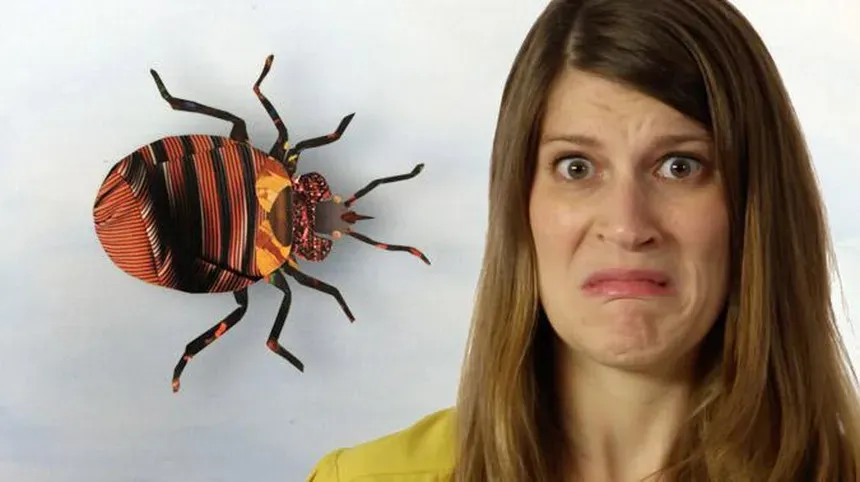Gross Science
Dinosaur Parasites!
Season 2 Episode 37 | 2m 43sVideo has Closed Captions
Even the mighty T. rex was covered in creepy, crawly parasites.
Even the mighty T. rex was covered in creepy, crawly parasites.
Problems with Closed Captions? Closed Captioning Feedback
Problems with Closed Captions? Closed Captioning Feedback
Gross Science
Dinosaur Parasites!
Season 2 Episode 37 | 2m 43sVideo has Closed Captions
Even the mighty T. rex was covered in creepy, crawly parasites.
Problems with Closed Captions? Closed Captioning Feedback
How to Watch Gross Science
Gross Science is available to stream on pbs.org and the free PBS App, available on iPhone, Apple TV, Android TV, Android smartphones, Amazon Fire TV, Amazon Fire Tablet, Roku, Samsung Smart TV, and Vizio.

Gross Science on Tumblr
Hi, I'm Anna. I host a YouTube series for NOVA, PBS Digital Studios, and WGBH on the slimy, smelly, creepy world of science. Here I post about all things bizarre and beautiful.Providing Support for PBS.org
Learn Moreabout PBS online sponsorshipDinosaurs were the kings (and queens) of the Mesozoic.
But even they were chock full of creepy, crawly parasites.
I’m Anna and this is Gross Science.
Fossilized dino poop is a veritable wellspring of information.
These ancient turds, called coprolites, can give us insights into what the animal ate and what was living in its guts.
As it turns out, even dinosaurs suffered from intestinal parasites.
One dinosaur coprolite found contained four different types of organisms.
Inside the fossilized feces were cysts and three types of eggs.
The cysts looked similar to those of amoebas that live in animal guts today.
And scientists found one type of flatworm egg and two types of roundworm eggs.
Malaria—which is often thought of as a human parasite—may also have plagued the dinosaurs.
Researchers discovered an ancient strain of a malaria-like parasite, frozen in time in the digestive system of a biting fly that was trapped in amber 100 million years ago.
Very Jurassic Park.
These parasites look like species that commonly infects birds and reptiles today.
Plus, the fly looked like one that could have fed on dinosaurs.
Not even the mighty T. rex could escape parasitic infection.
Often times, the mandibles of tyrannosaurids possess smooth-edged lesions, which many paleontologists thought to be bite wounds from fighting with other dinosaurs.
But in 2009, scientists proposed a different cause for the lesions—the remnants of ancient parasites.
Trichomonosis is a parasitic infection that afflicts modern day birds.
In fact, pigeons are commonly infected with trichomonosis, which can cause the birds to have flesh eating ulcers in their upper digestive tract, including in the mouth and esophagus.
It can actually bore holes in the bird’s jaw.
And when scientists compared these holes to the ones on fossilized T. rex jaws, they looks pretty similar.
Leading the scientists to hypothesis that whatever caused the holes in the dino jaws was related to the parasite that causes trichomonosis in birds.
Anyway, almost every living creature has at least one parasitic species that can infect it, and dinosaurs were no exception.
Just goes to show that life, uh, finds a way.
Support for PBS provided by:












